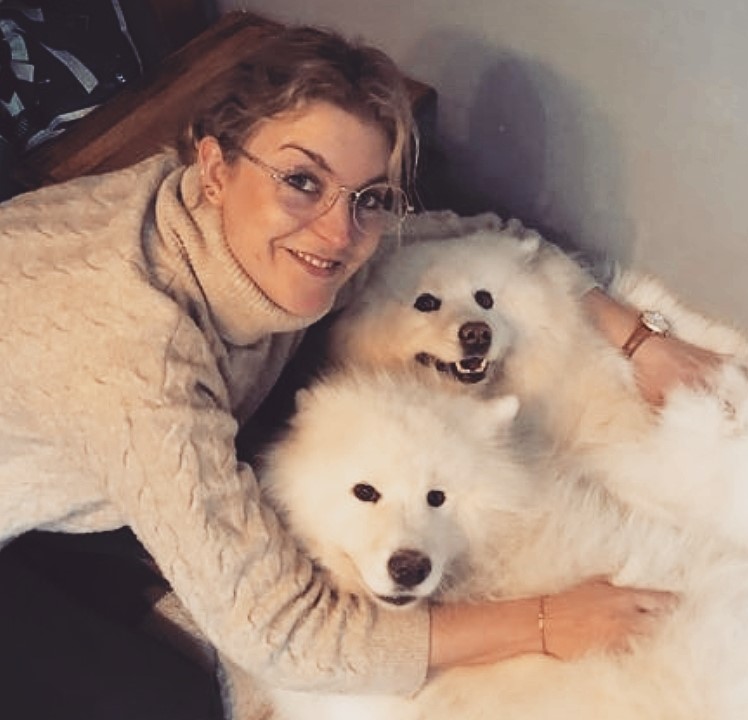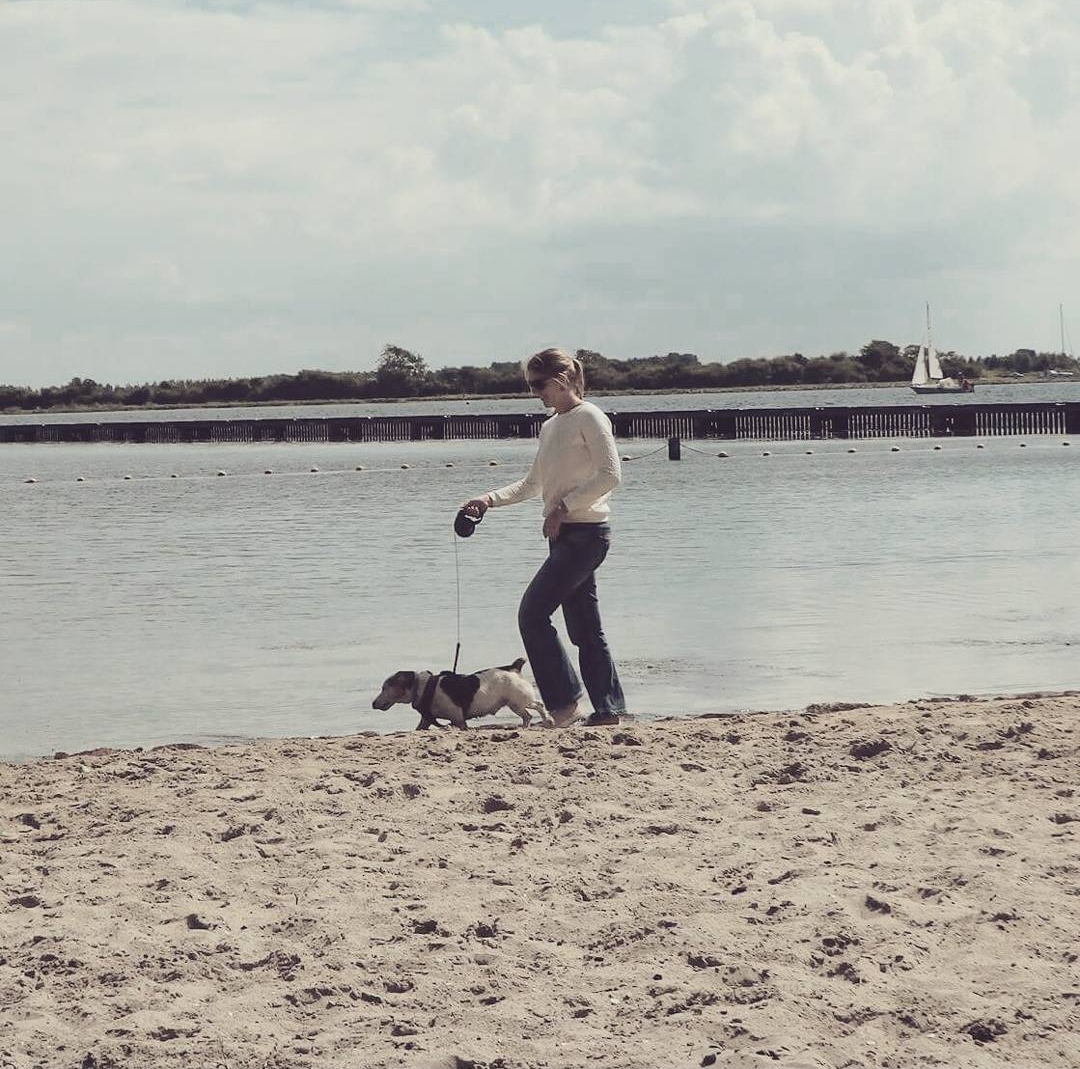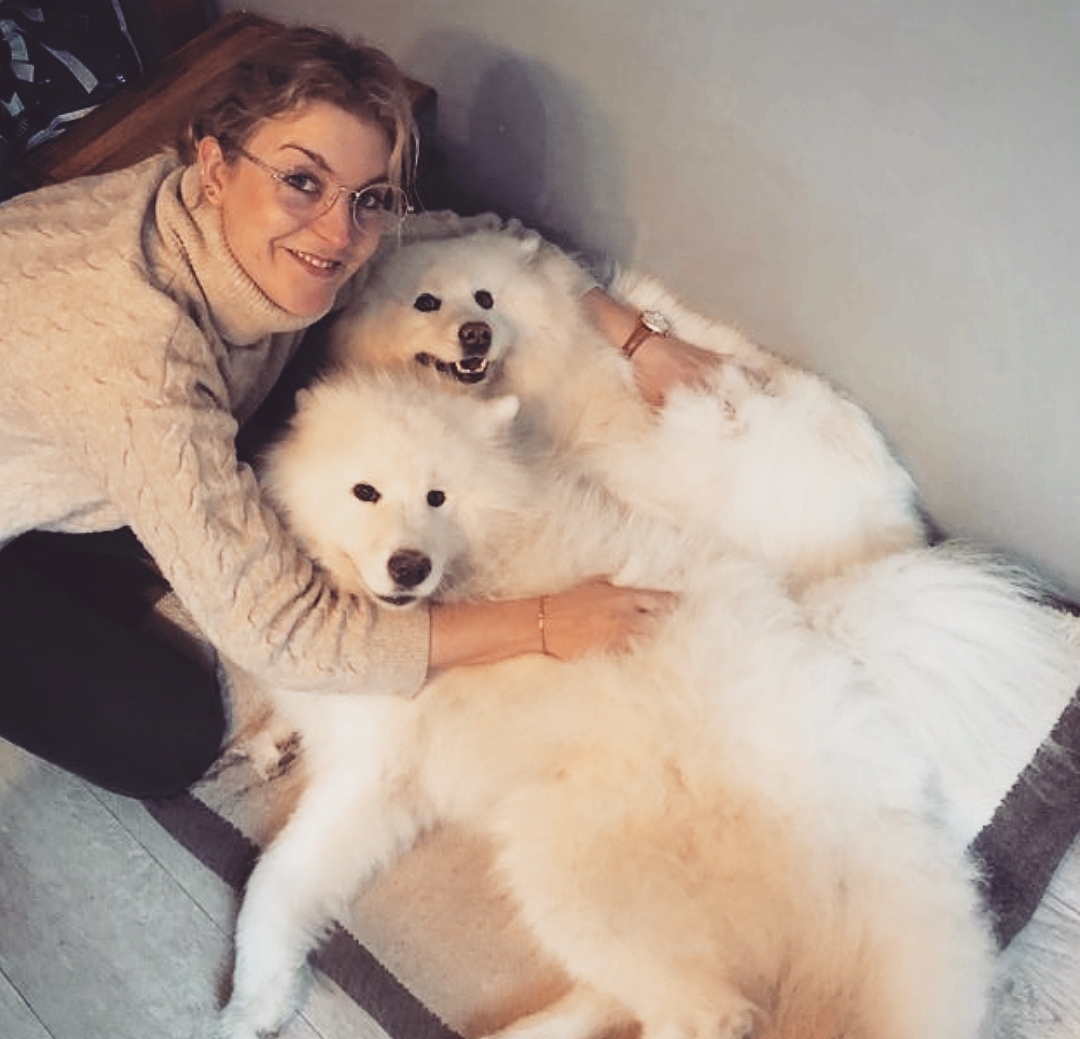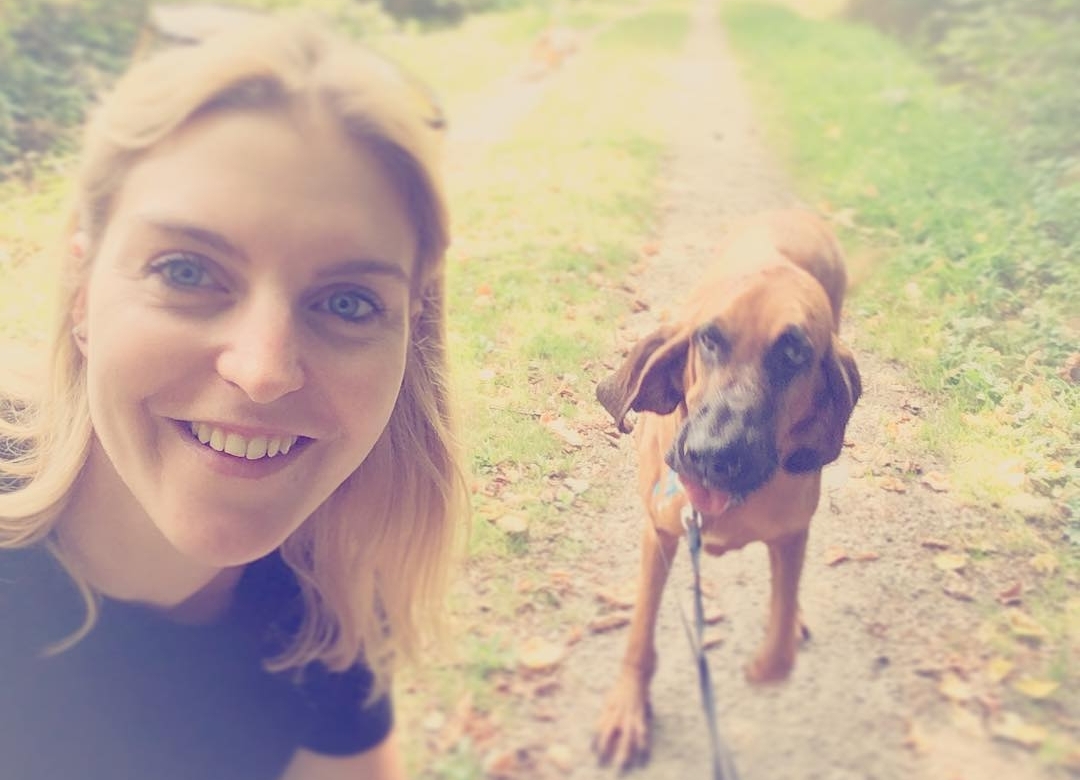

Meanwhile, there are now two furry roommates: Mowin and Willow, both Samoyed.
Same breed, yet completely different characters:
Mowin: a self-willed male, intelligent and sensitive. Loves to play. He immediately senses when something is wrong and is the first to calm you down. Unfortunately Mowin has an auto-immune desease which is stabilized with the right nutrition.
Willow: grateful, sweet and gentle. Prefers to lie on her blanket and does not like rain. She came to us as a neglected street dog. With the necessary patience, she has developed into a healthy house dog. Willow often helps during trainings. She is master of dog language.
I also have a feisty son, almost three years old, with a character that is almost comparable to Mowin's :-). Besides dog training I like to be creative. Painting or writing clears my head completely. As much as I can, I travel (distant) and learn about other cultures. Eating out is my guilty pleasure.

Over the years I have followed various courses. I don't stand still and I think it's important to keep learning. Especially when it comes to dog behavior. There are still many new (scientific) studies being done that provide new insights. Training is completely different today than 15 years ago and with good reason.


- Seminars by Turid Rugaas (international dog trainer, founder of calming signals)
- Various vocational training courses with Inge Pauwels (behavioral therapist)
- Vocational training at Veerle Goudenhooft (behavioral therapist)
- Numerous workshops and/or short courses with Sam Turner, David Pithie, Martin Gaus,...
- Complete education as a nutritional advisor for dogs and cats
- Education as a behavioral therapist (Laura Bangels)


I follow the evolution of each dog and after the sessions I like to receive feedback about your dog. We start in the dog's home environment, where the dog feels safe. Then we go outside and teach your dog how to deal with different stimuli. During the entire process I assist you with tips & tricks and I am your first helpline for questions.

I'll help you to find the right balance between what the dog needs and what is feasible for you. In addition, communication is an important part of the training. Learning to read your dog and to communicate clearly helps the human-dog relationship move forward.
Many puppies and older dogs are overstimulated. A problem that used to be less common. We also live more hectic ourselves and life is getting busier and busier. This is reflected in our dogs. The great thing about dogs is that they teach you to live more in the now and slow down. You just have to make time for those daily walks. If you're fully aware during the walk, your dog will notice and you will be more connected with each other.